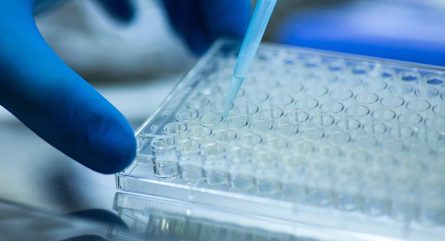The Takeaway: Since its discovery in 2005, CRISPR gene editing has gifted us everything from new cancer therapies to the ability to create animals resistant to certain disease. Despite these headline-grabbing advancements, however, everything is not always sunny in the world of genome editing. Read this blog to see what some of the benefits of CRISPR are—and understand what some of the drawbacks have been and how some researchers are working to overcome them.
CRISPR (clustered regularly interspaced short palindromic repeats) technology was first discovered in bacteria in the 1980s, but its potential for gene editing was not fully understood until much later. Today, this household word is fueling amazing advancements in genetic science, but there have been plenty of hiccups along the way.
A short history of CRISPR
In 2005, scientists Jennifer Doudna and Emmanuelle Charpentier made a breakthrough discovery that laid the groundwork for the CRISPR-Cas9 gene editing system. They identified the key components of the CRISPR system, specifically an RNA molecule that could guide the Cas9 protein to a specific target DNA sequence for precise gene editing.
The revolutionary nature of their findings was recognized, and in 2012, Doudna and Charpentier published a landmark paper in the journal Science outlining the CRISPR-Cas9 system's potential for RNA-programmed genome editing. This publication marked the beginning of the rapid development and widespread adoption of CRISPR technology for a variety of applications.
Since then, CRISPR has become a powerful tool in genetic engineering, allowing researchers to modify genes with unprecedented precision and efficiency. The discovery of CRISPR has had a profound impact on various scientific fields, from medicine and agriculture to basic research and biotechnology.
Benefits of CRISPR
CRISPR gene editing technology has led to numerous significant advancements across various fields. Some of the most notable achievements include:
Precision gene editing: CRISPR has revolutionized the field of genetic engineering by providing a precise and efficient method for modifying specific genes. This level of precision allows scientists to edit DNA with unprecedented accuracy.
Treatment of genetic diseases: CRISPR holds immense potential for treating genetic disorders. Researchers have made strides in using CRISPR to correct or mitigate the effects of diseases such as sickle cell anemia, cystic fibrosis, and muscular dystrophy by editing the underlying genetic mutations.
Cancer therapies: CRISPR is being explored as a tool for developing cancer therapies. Scientists are investigating ways to use CRISPR to target and eliminate cancer cells by modifying specific genes involved in cancer progression.
Functional genomics: CRISPR has significantly advanced functional genomics research. It enables researchers to systematically and efficiently study the function of individual genes, helping to uncover their roles in various biological processes.
Agricultural advancements: CRISPR has been applied to agriculture, leading to the development of genetically modified crops with improved traits such as resistance to pests, diseases, and environmental stress. This has the potential to enhance food security and sustainability.
Creation of disease-resistant animals: CRISPR has been used to create genetically modified animals with enhanced resistance to diseases. Livestock engineered with CRISPR may require fewer antibiotics and could be more resilient in the face of infectious diseases.
Stem cell research and regenerative medicine: CRISPR has facilitated advancements in stem cell research, allowing for precise modifications in these cells. This has implications for regenerative medicine, where modified stem cells could be used to repair or replace damaged tissues.
Infectious disease research: CRISPR has been instrumental in studying infectious diseases. Researchers use CRISPR to modify genes in pathogens, gaining insights into their virulence and developing potential strategies for combating infectious diseases.
Development of gene therapies: CRISPR has opened new avenues for the development of gene therapies. Scientists are exploring its use in correcting genetic defects and introducing therapeutic genes to treat a variety of medical conditions.
Evolutionary studies: CRISPR has enabled researchers to study the functional consequences of genetic changes over generations. This has implications for understanding evolutionary processes and the impact of genetic modifications on species.
Cons of CRISPR gene editing:
Despite all the good, headlines occasionally point out there are drawbacks to gene editing as well. Some include:
Ethical concerns: One of the most significant cons revolves around the ethical implications of altering the human germline. Editing genes in embryos may introduce heritable changes, raising concerns about designer babies and the potential for unintended consequences.
Unintended consequences: Despite its precision, CRISPR is not foolproof. Off-target effects can occur, leading to unintended genetic changes that may have unpredictable consequences. Ensuring the safety and accuracy of CRISPR interventions remains a challenge.
Unknown long-term effects: The long-term effects of CRISPR modifications are not fully understood. This lack of knowledge raises concerns about potential health risks and unintended consequences that may manifest over time or be passed down to future generations.
Socioeconomic disparities: The accessibility and affordability of CRISPR technology may create disparities in its use. This could lead to unequal access to gene therapies, exacerbating existing social and economic inequalities.
Environmental impact: Genetic modifications in agriculture may have unforeseen consequences on ecosystems and biodiversity. The release of genetically modified organisms into the environment raises questions about the potential ecological impact.
Regulatory challenges: The rapid pace of CRISPR advancements has outpaced regulatory frameworks. Establishing guidelines and ethical standards for the responsible use of CRISPR technology is crucial to prevent misuse and unintended consequences.
Dual-use concerns: CRISPR technology can be used for benevolent purposes, but its dual-use nature raises concerns about its potential weaponization. The ability to engineer pathogens or create genetically modified organisms for malicious purposes poses a security risk.
CRISPR gene editing holds immense promise for advancing medicine, agriculture, and scientific research. However, it also raises ethical, safety, and regulatory challenges that need careful consideration. Striking a balance between the benefits and risks of CRISPR is essential to harness its potential for the greater good while minimizing potential harm.

























